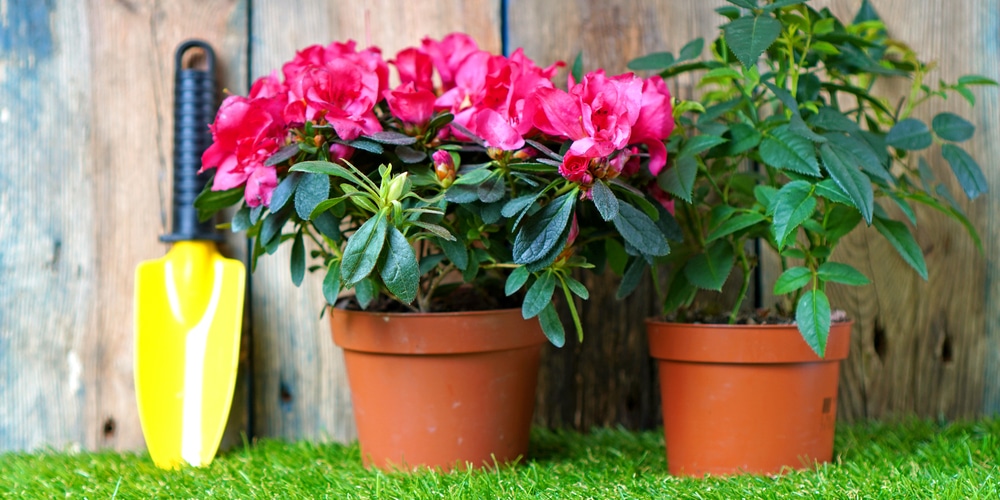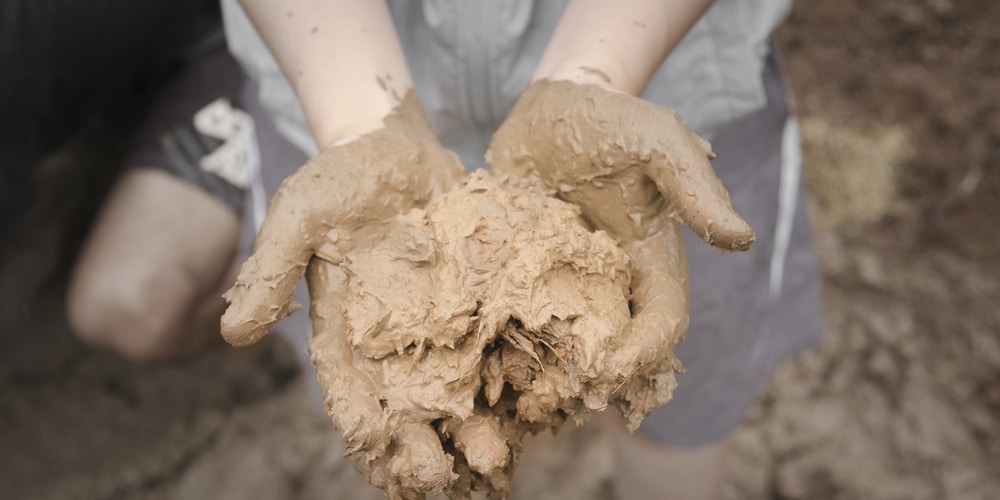Azaleas are stunning flowering shrubs that can make your garden more elegant and lively. Indeed, under optimal conditions, these plants produce colorful blooms that will attract plenty of pollinators (including bees and butterflies) to your garden.
If you have clay soil in your garden, you might know how challenging it can be to work through it and successfully grow plants, trees or grass.
Clay becomes gooey when wet and is extremely hard to move when dry. Because it can get waterlogged, not many plants do well in clay.
Too much water sitting around roots can cause them to rot (or worse, die). Plus, the anaerobic conditions that result from the lack of oxygen in the soil can attract the formation of bacteria.
In turn, such bacteria might cause problems to the plant’s growth, which will struggle even more for nutrients to survive. Indeed, plants need oxygen and adequate water to carry out photosynthesis: without them, they won’t grow or reproduce.

But if you have clay soil in your garden, you shouldn’t despair: because of its rich nutrient content (especially iron), this bulky substrate provides ideal conditions for growing azaleas.
Of course, you will have to make some amendments to the soil to give your plants the optimal environment for thriving. But all you have to do is prepare it: by improving the texture and drainage of your soil, you shouldn’t have many problems successfully growing azaleas.
In this essential guide, you’ll learn everything you should know about growing these plants in clay soil and how to ensure they thrive.
How to Plant and Grow Azaleas in Clay Soil
To begin with, choose an appropriate location for growing your azaleas in your yard. These flowering shrubs do best in partial shade and benefit from protection from the harsh wind.
Place them under a tree or somewhere that receives full morning sun but shade in the afternoon. Excessive lighting can make your azaleas prone to lace bug infestations and might burn the plant’s leaves.
However, that doesn’t mean your plant doesn’t need at least a couple of hours of bright sun. Indeed, too much shade can result in poor flowering and halted growth.
Soil
Don’t forget that azaleas require slightly acidic soil to thrive: amend your soil to reach pH levels between 4.5 and 6.0 if you want to see your plants giving you the best they can. Of course, consider carrying out a pH test before making any changes.
Clay soil characteristics

Because of clay soil’s characteristics, you will have to prepare a raised bed to grow your azaleas. Indeed, the shallow rooting system of these plants doesn’t do well in soggy conditions.
Planting your azaleas high above soil level helps the roots grow and spread without struggling for nutrients (including oxygen) Luckily, creating a bed isn’t challenging.
Rise your azaleas at least one or two inches higher than the ground. Add some sand or leaf compost and make a slight slope: use bricks or rocks for support.
Add compost
It is never a bad idea to add some acidic compost to the ground: it will help recreate the optimal conditions for growing azaleas.
Remember to amend an area as large as possible to allow the plant’s roots to spread into the surrounding soil without being restricted to the planting hole.
Planting
Now comes the fun part. Once you prepare the soil to accommodate azaleas, you must dig a wide and shallow hole for them. If your plants’ roots are around the root ball, don’t forget to loosen them before planting.
Not doing so might cause your azaleas not to grow. The hole you dig should be wide enough: at least the double of your azaleas’ root ball.
Add organic matter to it (to fill about one-quarter to one-third of the hole) to improve drainage and nutrient content.
Perform a simple test to check if the soil has adequate drainage: fill it with six inches of water and wait about 24 hours: if the water has drained, you can safely plant your azaleas. Otherwise, you’ll have to amend the soil.
Once you place your azaleas on the hole and cover it with amended soil, water your plants thoroughly to allow them to establish in your garden. Keep your azaleas moist for the first couple of weeks.
How to Plant and Grow Azaleas in Clay Soil: Conclusion
Reduce the watering frequency as they adapt to your garden. If you live in a hot region, consider adding spread around your plants: it will hold moisture and further increase the nutrient content.
Related Article: Zone 8 Shrubs
